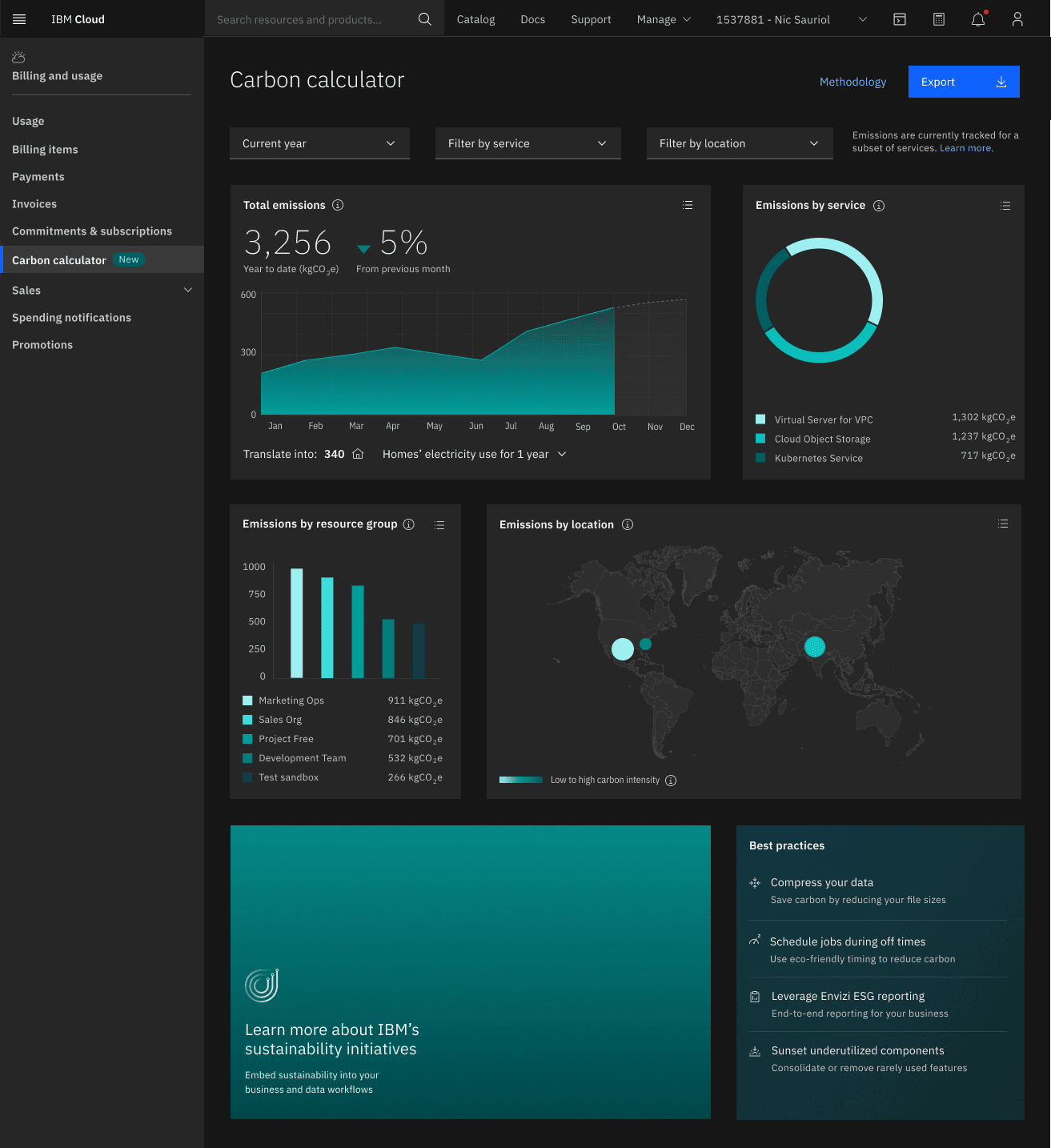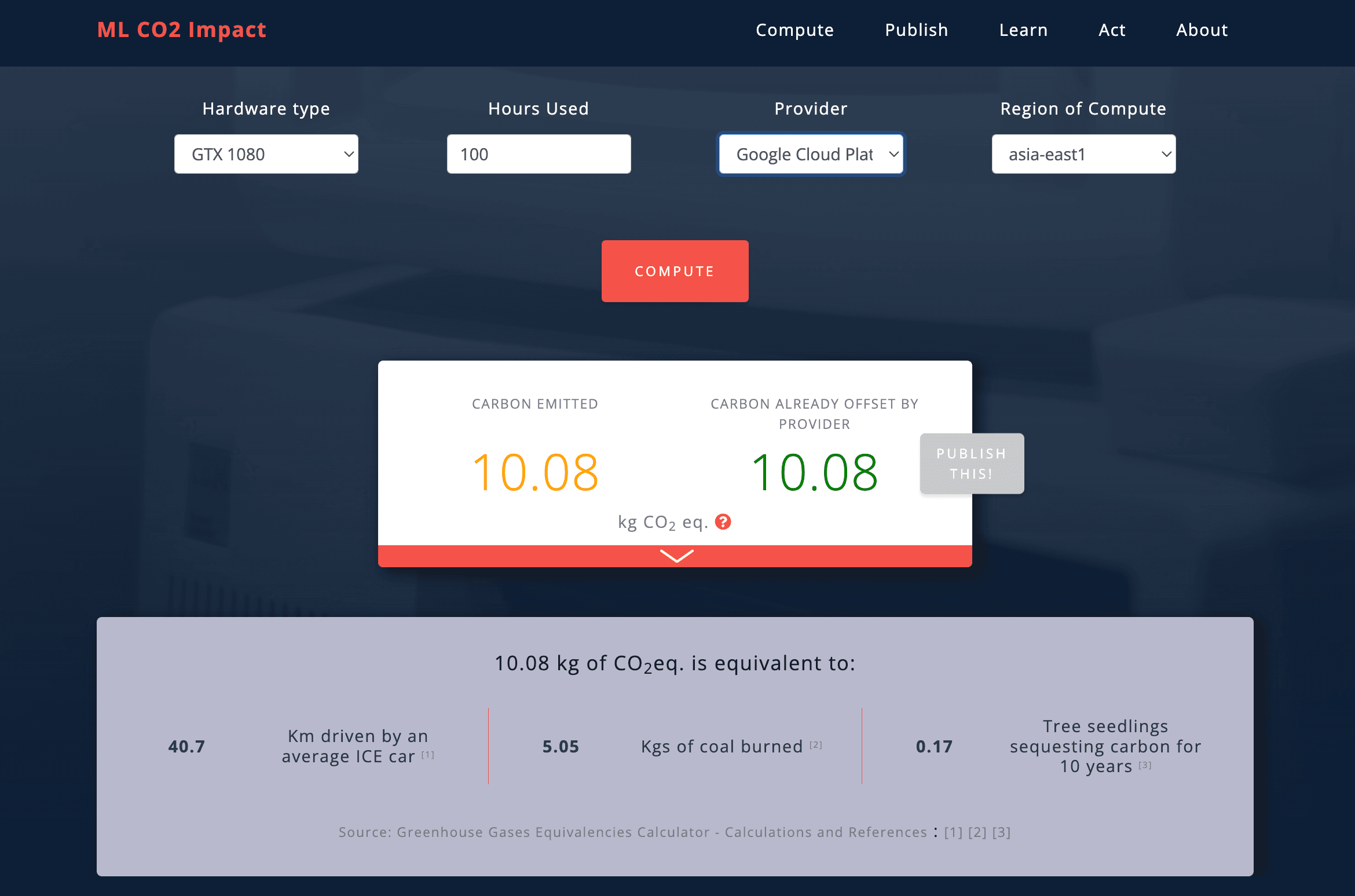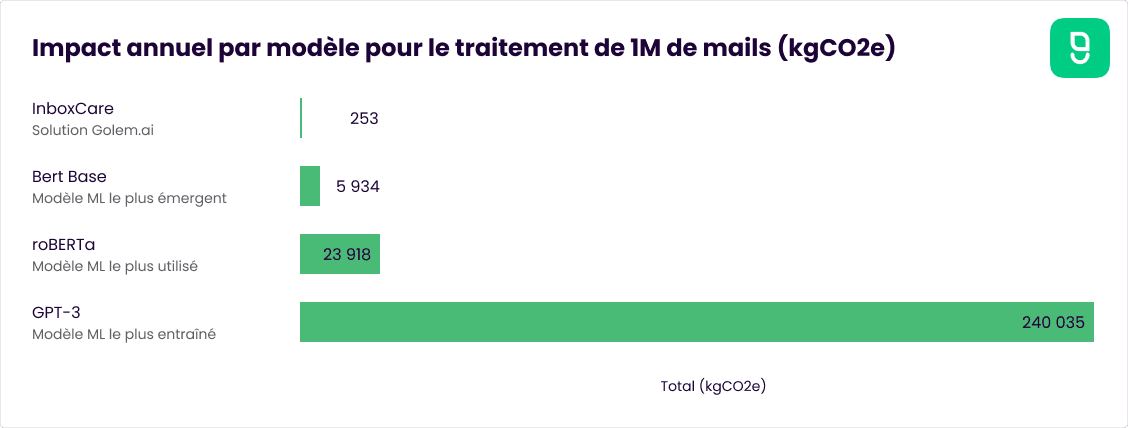The digital sector generates 4% of global greenhouse gas emissions. Data centers and hardware are the main contributors to that impact. However, those machines — not to mention all software, websites, apps and more — run code written by developers. This means developers still have a considerable role to play. So how can engineers, and indeed anyone shaping tech today, reduce their projects’ environmental impact?
In part 3 of this series, we explored the concrete green IT solutions generating demonstrable results today. In this fourth and final chapter, we take a look at the future. How can green computing help companies achieve their carbon neutrality goals by 2050? What difference will regulatory changes make? And what about AI? Look no further…
2050: The final countdown
According to a recent IBM study of 3000 CEOs across 24 industries, 42% of these business leaders singled out sustainability as their number one challenge over the next three years. Most likely because most major companies have committed to reaching carbon neutrality by 2050.
Scaleway, for example, is aligned with the objectives of its parent company, Iliad Group, to reach carbon neutrality for scopes 1 and 2 by 2035, and for scope 3 by 2050. The hardware aspect is particularly important in this case, as it accounts for three quarters of the digital sector’s emissions. The environmental impact of producing and disposing of hardware means that developers need to find ways to extend that hardware’s life. By writing widely compatible applications and operating systems, developers can reduce device obsolescence, and as such e-waste.
However, the responsibility for green IT does not lie solely with developers. Simply deactivating or deleting unneeded data and resources can make a big difference, according to Google research cited by the Green Software Foundation. Google Cloud Platform (GCP) calculated that dormant data, or “unattended projects”, accounted for over 600 gross metric tons of CO2 emissions (60 times more than what one French person currently emits per year). This is why GCP developed Unattended Project Recommender, a service that notifies users of their own sleeping data and its CO2 emissions, and then prompts them to remove unnecessary data.
Regulation: are you compliant?
In Europe alone, companies should prepare for an incoming wave of sustainability regulations. First and foremost, the Corporate Sustainability Reporting Directive (CSRD), which is already in place, and which will require companies of a certain size (with over 250 employees, or €40m in turnover, or €20m in assets) to submit annual non-financial reports aligned with CSRD requirements. The deadline is January 1st 2025, covering the 2024 financial year, as Plan A explains. This means impact reporting will soon be mandatory for the majority of European companies. Furthermore, regulations currently under discussion in the European parliament include laws against unprovable ecological claims (i.e. fines for companies found guilty of greenwashing).
Such constraints will inevitably further the growth of green IT practices, as demonstrating efforts to reduce computing’s environmental impact will shift from being a nice-to-have to a must-have.
And that’s just for starters. As explained in part 3, France’s strict RGESN guidelines for eco-designed websites are set to become EU regulation; and indeed, many companies and organizations are already expected to follow its requirements.
Then there’s the notion of PCR, or Product Category Rules, which in France are managed by national ecological transition agency ADEME. These rules outline how to measure hardware’s environmental impact, involving a full lifecycle analysis that covers the manufacture, running, and disposal of all the underlying device components. Adhering to these rules is a significant challenge; most organizations lack the necessary data to quantify the impact of their supply chains, real estate, and electricity supply. Boavizta, an independent volunteer-led organization working to make such data publicly available, can help here (cf. examples of their work here and here).
Specific PCRs are currently being developed for the cloud and data centers, which will have far-reaching consequences for CTOs, engineers and developers of all kinds. While these rules are currently only proposals being adopted by a few forward-thinking companies, they are likely to become French law by around 2025. This means cloud providers will come under increased pressure to provide true, accurate and comparable data on the emissions generated by their activities. Exposing this data will allow clients to choose the cloud provider with the lowest impact, thereby helping them to meet their own CSRD reporting requirements.
If this all seems somewhat abstract for now, it won’t be for long. AWS recently came under scrutiny from UK regulators for not providing timely scope 3 emissions data. The cloud leader quickly responded that such data would be available by “early 2024”, and then explained in detail how said data could already be shared directly with reporting companies (again, think CSRD), using AWS Clean Rooms.
How to get ready
Green IT implies all kinds of new ways of thinking about computing. However, as we’ve seen in part 2, green coding isn’t complicated or costly to put in place. It merely requires clean, simple programming, which is both cheaper and more efficient. As a result, green IT may be more of an evolution than a revolution, but the question remains: how can your teams get ready for it?
The Green Software for Practitioners (LFC131) course is the first of its kind, in that it teaches developers and engineers about principles such as carbon awareness, energy efficiency, and making the most of hardware, allowing them to apply green software principles to their own application development. Conceived by the Green Software Foundation (GSF), this free online course has already been followed by over 50,000 engineers. It’s a great first step in getting development teams to think more deeply about lowering the impact of their work.
Besides training, there are countless ways to measure your activity’s impact, be it Cloud Carbon Footprint or Scaphandre for the cloud, Boavizta’s Manufacturer Data Repository for hardware, or the GSF’s Software Carbon Intensity (SCI) score for software.
Furthermore, new tools emerge on a regular basis. IBM’s new Cloud Carbon Calculator, for example, draws on AI-powered insights… notably to help clients manage the (considerable) impact of AI computing.
The tool is “designed to quickly spot patterns, anomalies and outliers in data that are potentially associated with higher GHG (greenhouse gas) emissions,” says the product’s press release. “Based on technology from IBM Research and through a collaboration with Intel, the tool uses machine learning and advanced algorithms to help organizations uncover emissions hot spots in their IT workload”. Furthermore, like AWS’ example above, IBM’s Cloud Carbon Calculator can provide tailor-made data for impact reporting.
It joins a number of SaaS and open-source tools already available to measure cloud impact, with the addition of AI suggesting that competition between makers of such tools will intensify in the near future, to end users’ certain benefit.
Making AI more sustainable
As IBM’s survey points out, just as many CEOs are investing in generative AI today (43%) as are concerned about sustainability (42%). A potential contradiction in terms when we consider the impact of this fast-growing new technology.
Whilst estimates vary widely, researchers have calculated that training one type of medium-sized generative AI model consumed energy equivalent to 284 tons of CO2 emissions, or the same as 32 French people in one year. And whilst the training stage is the most energy-intensive, usage, or inference of models like GPT-3 or 4 also has impact: other researchers estimate that having a 20 to 50-question conversation with ChatGPT is like emptying a half-liter bottle of water on the floor (this being the amount of water used to cool the data centers in which large language models run).
Again, not all models are as resource-hungry… and, as in other cases, there are ways to measure this impact, in addition to choosing more planet-friendly models. Using Stable Diffusion for 150,000 hours, for example, produces ‘just’ 11 tons of CO2 equivalent, according to research by [Hugging Face] (which happens to be one of the AI companies most actively advocating to limit its sector's environmental impact).
This figure was obtained thanks to the Machine Learning Emissions Calculator, an independent tool made by ML experts concerned about AI’s environmental impact. It calculates across a range of different hardware types, usage time, cloud provider and region, to give an estimate of the carbon (kg CO2 equivalent) emitted per workload.
No tool is perfect, however: this one doesn’t have cloud providers’ PUE data, which means the total carbon emissions it provides have to be multiplied by that number. But still, it’s a start!
How can AI’s impact be reduced? Advice given by the makers of the ML calculator, applicable by most IT professionals, is essentially common sense:
- Choose the right cloud provider, that clearly states its environmental commitments, and ideally only uses renewable energy
- Choose the right region: the carbon intensity of electricity in France, for example, is over ten times lower than in the US (we’d add that time of day is also important here, as a grid’s carbon mix can vary enormously in the course of 24 hours)
- Buy carbon offsets & push for more transparency in terms of impact reporting (we’d argue the latter is more effective than the former).
Ajay Kumar, of EMYLON Business School, and Tom Davenport, of Babson College, authors of the aforementioned Harvard Business Review article, share some broader tips:
- Use existing large generative models rather than generating your own, as the latter will provoke unnecessary emissions; existing models can also be fine-tuned to meet specific needs, rather than reinventing the wheel
- Use and train LLMs only when they generate extra added value. For example, “if the usage of a 3x more power-hungry system increases the accuracy of a model by just 1–3%, then it is not worth the extra energy consumption”, say Kumar and Davenport
- Be discerning about when you use generative AI (GAI). Current hype means GAI is often touted as a magic wand answer to everything, but it’s not. “Tools just for generating blog posts or creating amusing stories may not be the best use for these computation-heavy tools”, say the authors. “They may be depleting the earth’s health more than they are helping its people”, unlike applications in health or disaster avoidance, for example.
Furthermore, alternatives exist. France’s Golem.ai’s systems, for example, use 1000 times less energy than GPT-3. Principally because they are based on symbolic AI, which uses high-level representations of problems, rather than the massive amounts of internet-scraped data that is used to train generative AI. Additionally, symbolic AI requires no training, and therefore consumes no energy before it can be used, in contrast to generative AI’s energy-intensive training stage.
The “1000 times less” figure was obtained after an independent assessment by sustainability accountants Greenly, which studied the emissions generated by several different AI models to process 1 million emails. Whilst Golem.ai’s InboxCare generated 253 kg of CO2 equivalent, roBERTa generated roughly 100 times more, and GPT-3, almost 1000 times more, when that impact is amortized over one year.
Takeaways
To conclude, in green IT there’s no single ‘right’ path to take, but a combination of:
- Sensible, simple coding that only uses necessary resources at all times
- Avoiding heavyweight applications, websites and OSs that become obsolete every two years’ time
- Favoring hardware that does the required job for as long as possible, rather than throwing out perfectly functional existing tech whenever fancy new tech is available
- Choosing a cloud provider that allows for sustainable computing via renewable energy, concentrating workloads in places and times with the cleanest possible energy, and deleting unneeded data (cf. GCP, above)…
…are bound to deliver concrete results when looking to reduce the impact of your organization’s computing activities.
Green IT may just be getting off the ground, but its principles are accessible to all, at no extra cost. Indeed, the savings can be considerable, both for your budget, and for the planet. So now’s the time to act!
That’s a wrap! Let’s keep the Green IT conversation going! Watch this space…
This blogpost is extracted from the Scaleway white paper "How can engineers make IT more sustainable?", which you can download in full for free here!





